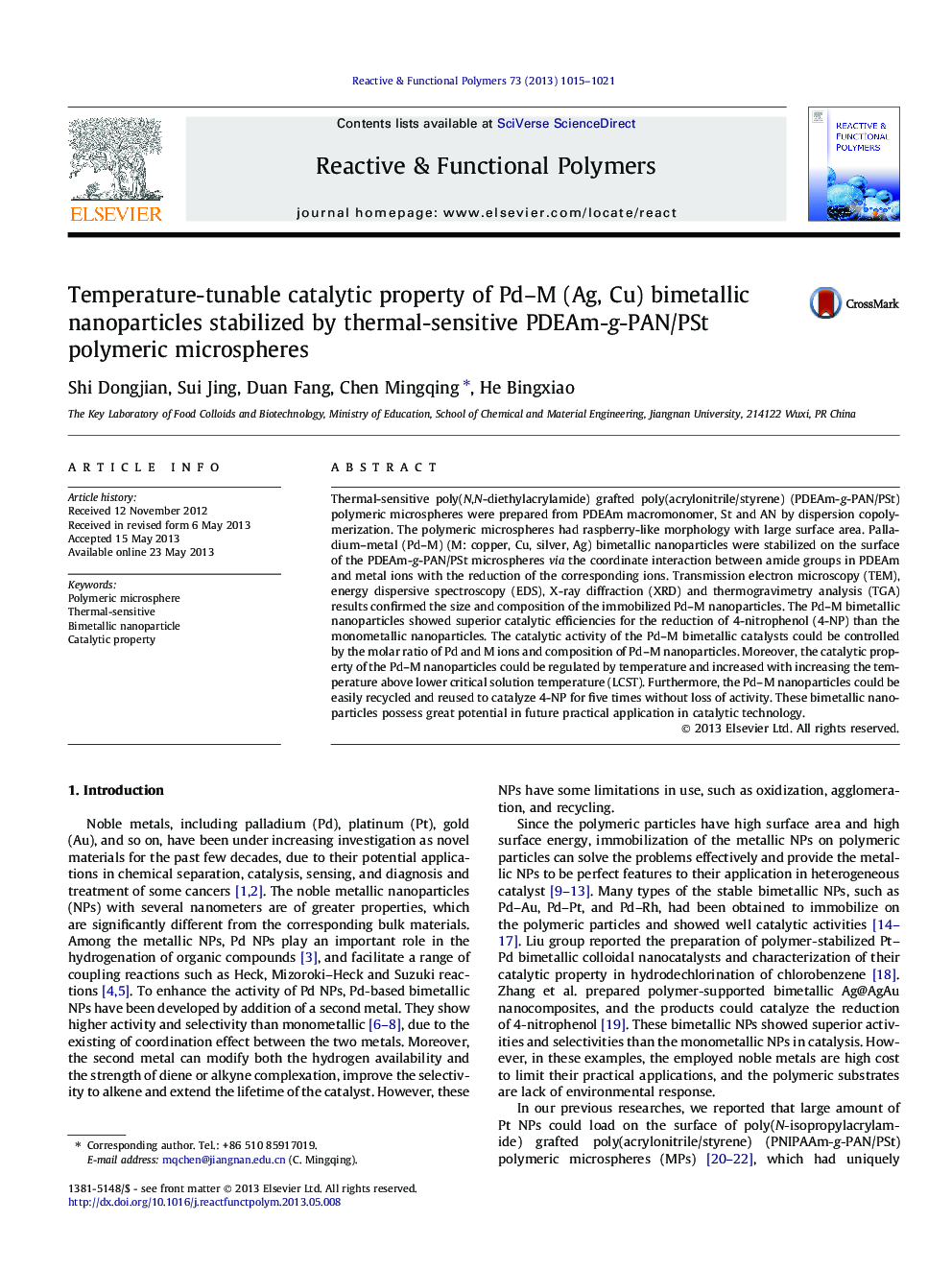| Article ID | Journal | Published Year | Pages | File Type |
|---|---|---|---|---|
| 5210090 | Reactive and Functional Polymers | 2013 | 7 Pages |
Thermal-sensitive poly(N,N-diethylacrylamide) grafted poly(acrylonitrile/styrene) (PDEAm-g-PAN/PSt) polymeric microspheres were prepared from PDEAm macromonomer, St and AN by dispersion copolymerization. The polymeric microspheres had raspberry-like morphology with large surface area. Palladium-metal (Pd-M) (M: copper, Cu, silver, Ag) bimetallic nanoparticles were stabilized on the surface of the PDEAm-g-PAN/PSt microspheres via the coordinate interaction between amide groups in PDEAm and metal ions with the reduction of the corresponding ions. Transmission electron microscopy (TEM), energy dispersive spectroscopy (EDS), X-ray diffraction (XRD) and thermogravimetry analysis (TGA) results confirmed the size and composition of the immobilized Pd-M nanoparticles. The Pd-M bimetallic nanoparticles showed superior catalytic efficiencies for the reduction of 4-nitrophenol (4-NP) than the monometallic nanoparticles. The catalytic activity of the Pd-M bimetallic catalysts could be controlled by the molar ratio of Pd and M ions and composition of Pd-M nanoparticles. Moreover, the catalytic property of the Pd-M nanoparticles could be regulated by temperature and increased with increasing the temperature above lower critical solution temperature (LCST). Furthermore, the Pd-M nanoparticles could be easily recycled and reused to catalyze 4-NP for five times without loss of activity. These bimetallic nanoparticles possess great potential in future practical application in catalytic technology.
